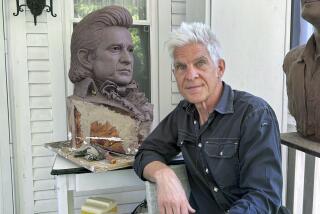Making change
AS ANY SPORTS FAN knows, there’s no better scientific method for settling a dispute than flipping a coin. As we hope the U.S. Mint knows, there’s no better way to replace the outdated dollar bill than with the commemorative $1 coins introduced this week.
The coins, which bear the images of U.S. presidents, are being touted as educational. But is there a numismatic hidden agenda? The Mint is discouraging any such speculation.
“We see this as offering consumers choice,” spokeswoman Becky Bailey told The Times. “In some situations the dollar bill works better, and in some situations coins work better. With these coins, it’s just a wonderful history lesson.”
Actually, we can’t conceive of any situation in which a dollar bill makes more sense than a dollar coin, once vending machines are retrofitted to accept the new money. But overcoming Americans’ sentimental attachment to the dollar bill may require a stealth strategy of flooding the country with attractive coins that look like real money. To many Americans, the definition of “real money” is that it bears the likeness of a president or founding father. Recent dollar coins adorned by two prominent women -- Susan B. Anthony and Sacagawea, the Native American guide for the Lewis and Clark expedition -- flopped.
By contrast, the new ones will feature images of the presidents in order, beginning with a quartet honoring George Washington, John Adams, Thomas Jefferson and James Madison. (The Richard Nixon dollar, which presumably will not bear the motto “I am not a crook,” is scheduled for release in 2016.)
If they catch on, it will be easier to retire the dollar bill, a scenario made more likely by another recent trend: an increase in the number of $2 bills. Earlier this month, Reuters reported that the Federal Reserve has experienced an increase in demand for the two-fers, once associated primarily with racetracks, strip clubs and the tips slipped to altar boys after Catholic weddings.
Together, the $2-bill comeback and the minting of new dollar coins point to a harmonic currency convergence that could consign the dollar bill to the same graveyard occupied by its Canadian counterpart. (The $1 coin that replaced bills in the Great White North is called the “loonie,” after the common loon, the water bird that is commemorated on one side. Another reason, perhaps, to stick with presidents.)
Inflation long ago sealed the demise of the dollar bill. Once the new coin replaces paper, the Mint can turn its attention to abolishing an even more anachronistic denomination: the penny.


